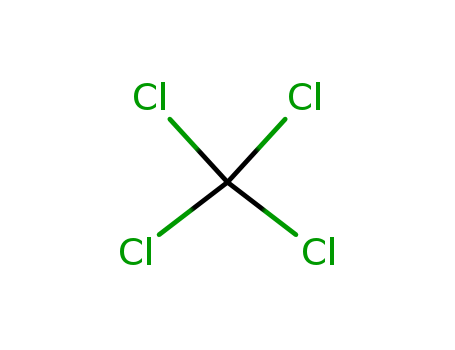10.1246/bcsj.62.2093
The research focused on the rotational isomerism in fluorene derivatives, specifically examining the conformational equilibria of 9-substituted 9-(2-bromomethylphenyl)fluorene derivatives. The purpose of the study was to understand the conformational equilibria (ap-sp) of these compounds based on the kinetic data for internal rotation obtained through HNMR spectroscopy. The researchers synthesized eight 9-substituted 9-(2'-bromomethylphenyl)fluorene derivatives and compared their HNMR behavior with those of 9-substituted 9-(2'-methylphenyl)fluorene derivatives. The conclusions drawn from the study indicated that the conformational equilibria were influenced by electronic repulsion and/or steric hindrance between the 2'-bromomethyl group and the 9-carbonyl group or the fluorene ring. Chemicals used in the process included NBS (N-Bromosuccinimide), BPO (Benzoyl peroxide), carbon tetrachloride, dry hydrogen bromide, and various solvents such as CDCl3, DMSO-d6, acetone-d6, and methanol-d4 for NMR spectroscopy, as well as reagents for the synthesis and purification of the fluorene derivatives.
10.1021/jo7021058
The research focuses on the synthesis of three new classes of axially chiral biheteroaryls derived from the 1,4-diphenyl-1,3-butadiyne framework. The purpose of the study was to explore the reactivity of bis(ketenimines) and bis(carbodiimides) and their potential to form axially chiral bis(benzocarbazoles) and bis(quinindolines) through biradical cyclizations. The researchers successfully prepared these compounds, as well as mixed biheteroaryls consisting of benzocarbazole and quinindoline units, using a modified strategy. The chemicals used in the process included 1,4-bis(2-aminophenyl)-1,3-butadiynes, diphenylketene, triphenylphosphine, carbon tetrachloride, triethylamine, arylisothiocyanates, and various aryl isocyanates. The conclusions of the research were that the bis(heterocumulenes) could undergo simultaneous biradical cyclization leading to potential tetraradicaloid intermediates, and that the resulting compounds were obtained as racemic mixtures of atropoenantiomers due to the presumed chiral biaryl axis.
10.1039/DT9820000671
The research investigates the oxidative-addition reactions of the stable diradical perfluoro-NN'-dimethylethane-1,2-bis(amino-oxyl) with various iridium(I) and platinum(0) complexes. The diradical reacts with trans-[IrCl(CO)L2] (where L is PPh3, AsPh3, or PMePh2), trans-[Ir{ON(CF3)2}(CO)(PPh3)2], and [Pt(PPh3)4] to form seven-membered ring metallacyclic complexes. These reactions result in the formation of air-stable white solid complexes, which are monomeric in solution. The study explores the mechanistic aspects and synthetic potential of these reactions, utilizing techniques such as infrared spectroscopy and nuclear magnetic resonance (NMR) spectroscopy to characterize the products. The chemicals involved include the diradical, various iridium and platinum complexes, benzene, carbon tetrachloride, methanol, and other solvents, all of which play crucial roles in facilitating and characterizing the reactions.
10.1016/0008-6215(83)88138-5
The research investigates the cleavage of interglycosidic linkages in per(trimethylsilyl)ated and permethylated carbohydrates using iodotrimethylsilane (ITMS) in carbon tetrachloride. The purpose of the study was to develop a rapid and mild method for the hydrolysis of carbohydrate chains, which could be particularly useful in the analysis of permethylated carbohydrates. The conclusions drawn from the research indicate that ITMS is more reactive towards interglycosidic linkages in permethylated carbohydrates compared to per(trimethylsilyl)ated ones, and that the cleavage rate depends on the type of interglycosidic linkage. The study found that iodinolysis with ITMS, followed by treatment with water, offers a novel method for hydrolysis of permethylated carbohydrates. Key chemicals used in the process include iodotrimethylsilane, carbon tetrachloride, methanol, silver oxide, and various permethylated and per(trimethylsilyl)ated mono- and disaccharides.
10.1055/s-0029-1218711
The study presents an efficient one-pot synthesis method for oxime ethers from alcohols using triphenylphosphine and carbon tetrachloride. The process involves the O-alkylation of oximes with various structurally diverse alcohols in the presence of catalytic amounts of tetrabutylammonium iodide and 1,8-diazabicyclo[5.4.0]undec-7-ene (DBU) in refluxing acetonitrile. The chemicals serve specific roles: triphenylphosphine and carbon tetrachloride convert alcohols into alkyl halides, DBU acts as a base to activate the O-H bond in oximes, and tetrabutylammonium iodide functions as a phase-transfer catalyst. The synthesized oxime ethers are important in organic and medicinal chemistry, used for introducing functional groups into organic compounds and as key structural motifs in drugs. The study demonstrates high efficiency and selectivity, with primary alcohols being more reactive than secondary alcohols in O-alkylation, and the method predominantly yields O-alkyl ethers over nitrones. The study also includes semiempirical quantum-mechanic calculations to support the stability of the synthesized products, indicating a lower heat of formation for Z-isomers.
10.1038/162111a0
The study explores a new ketone synthesis method involving the reaction between substituted malonic esters and acid chlorides, producing acylmalonic esters in high yield. It highlights the potential for synthesizing various carbonyl compounds, including ketones, diketones, keto-acids, and others. Additionally, the study challenges previous assertions about carbon tetrachloride's ineffectiveness in extinguishing petrol fires, emphasizing its historical success and the importance of volatility and vaporization in fire extinguishment. Methyl iodide is also discussed as a more volatile alternative for extinguishing fires compared to carbon tetrachloride, with the study noting the significance of proper application techniques for both chemicals.



 T,
T, N,
N, F
F


